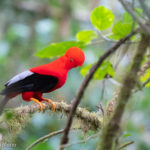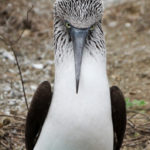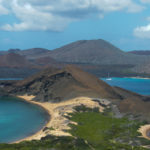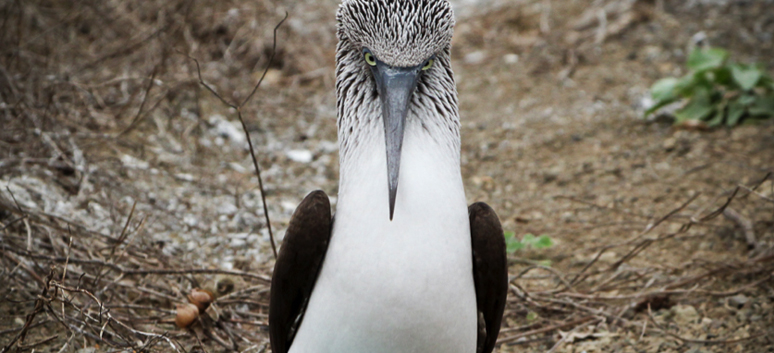
The Blue-footed Booby is one of my favourite sea birds to be found in the Galapagos. They are easily identifiable by their bright blue feet (the clue is in the name!). Their plumage is brown on top, with a white under belly and slightly darker brown wings. There are 3 ways to tell the difference between the male and female birds. The female is slightly larger in size with larger eye pupils and darker blue feet. Quite often you will hear them before you see them as they have distinctive mating calls. The female honks, whilst the male whistles.
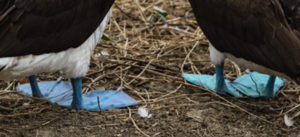
The Boobies nest in colonies close to the sea, but like flat ground so can often be found on or close to pathways, which is great to get an up close view. Remember to keep at least 2 metres away, so as not to frighten them. Breeding happens at any time of the year when food is in good supply. The Blue-footed Booby is one of 3 species of Booby found in the Galapagos, which are large sea diving seabirds, with dagger like bills. The name booby is derived from the Spanish word bobo, which means a fool or clown.
The name originates from the funny looking courtship dance where the main focus is their feet, which they lift one at a time as if they were wearing clown shoes. The pair then look skyward, pointing their beaks and wings upwards, whilst calling. They can lay up to 3 eggs at a time and the eggs are incubated by both parents. The chicks can often be seen in the nest with the parents and look like white balls of fluff. Despite their apparent cuteness, it is quite common for the stronger, larger chick to kill the younger siblings when food is short.
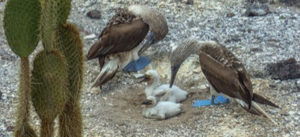
I’ve been lucky enough to see them every time I have visited the Galapagos and they are still a common sight on many islands despite the declining population. The population was significantly affected by the large El Nino event in 1997-8, which saw a decline in their main food source, sardines.
Best Places to view: Coastal waters throughout the islands. Espanola-Punta Suarez; San Cristobel-Punta Pitt; Daphne; North Seymour; Baltra. Also, can be found on Isla de la Plata, just off the coast of mainland Ecuador.

